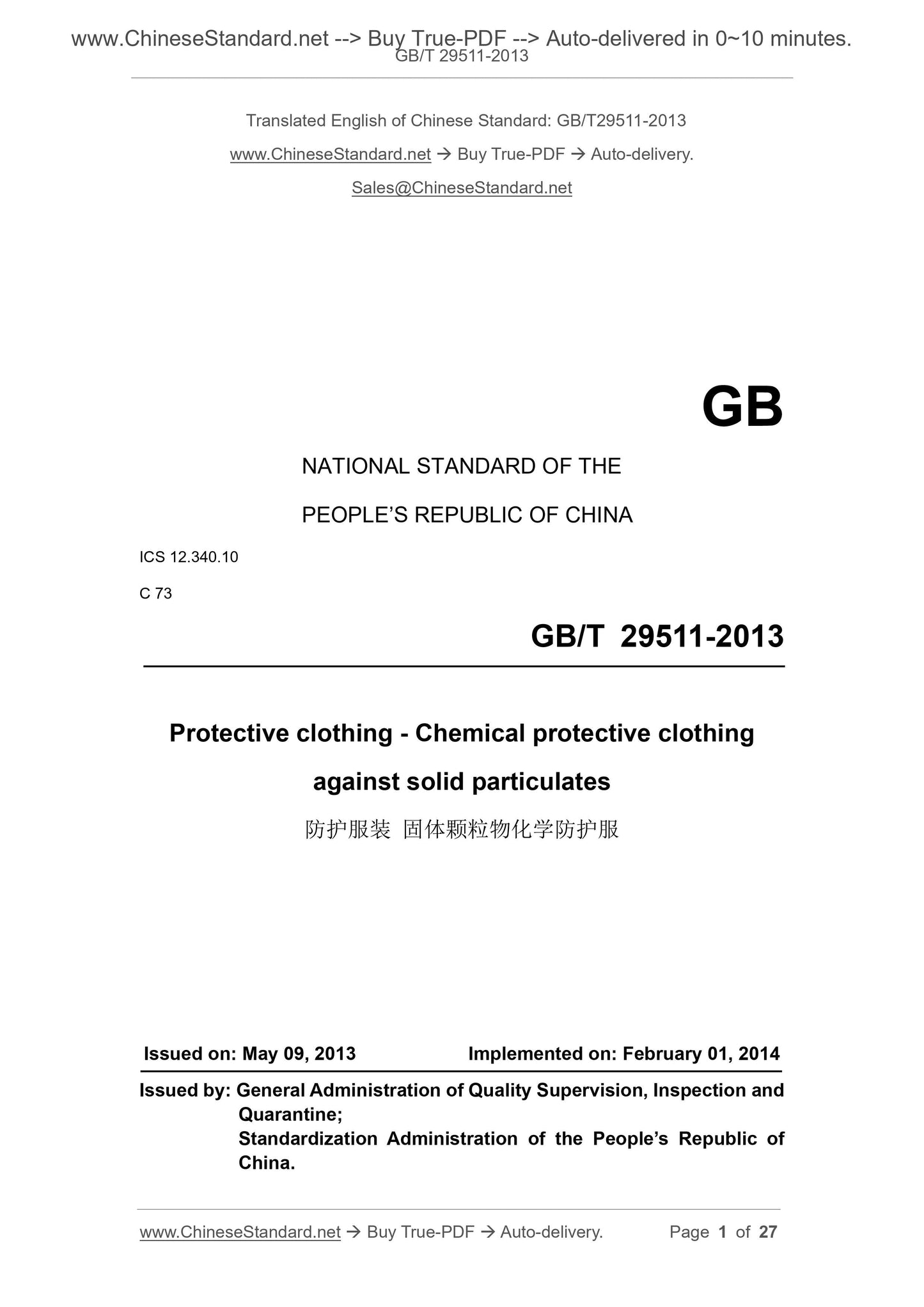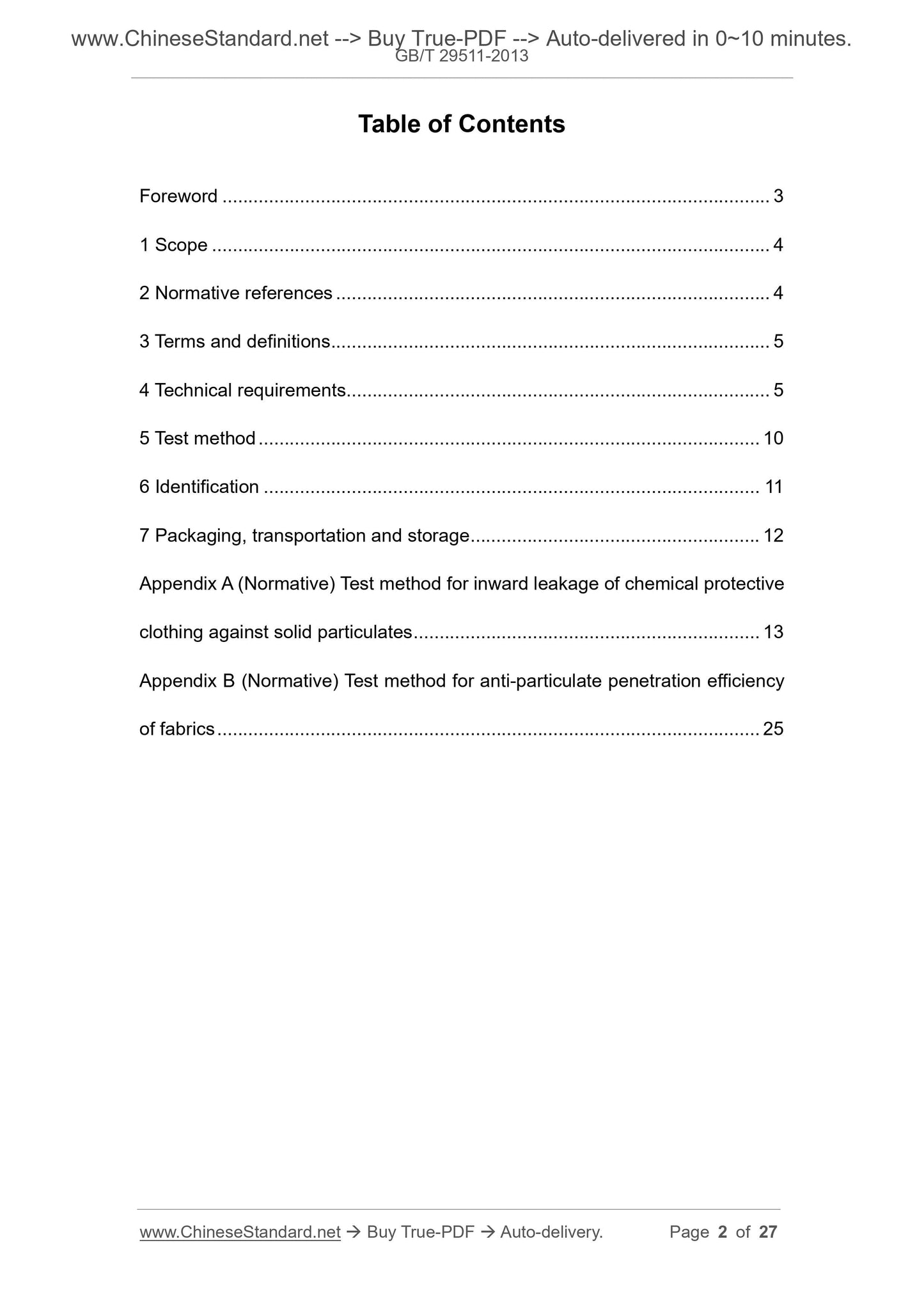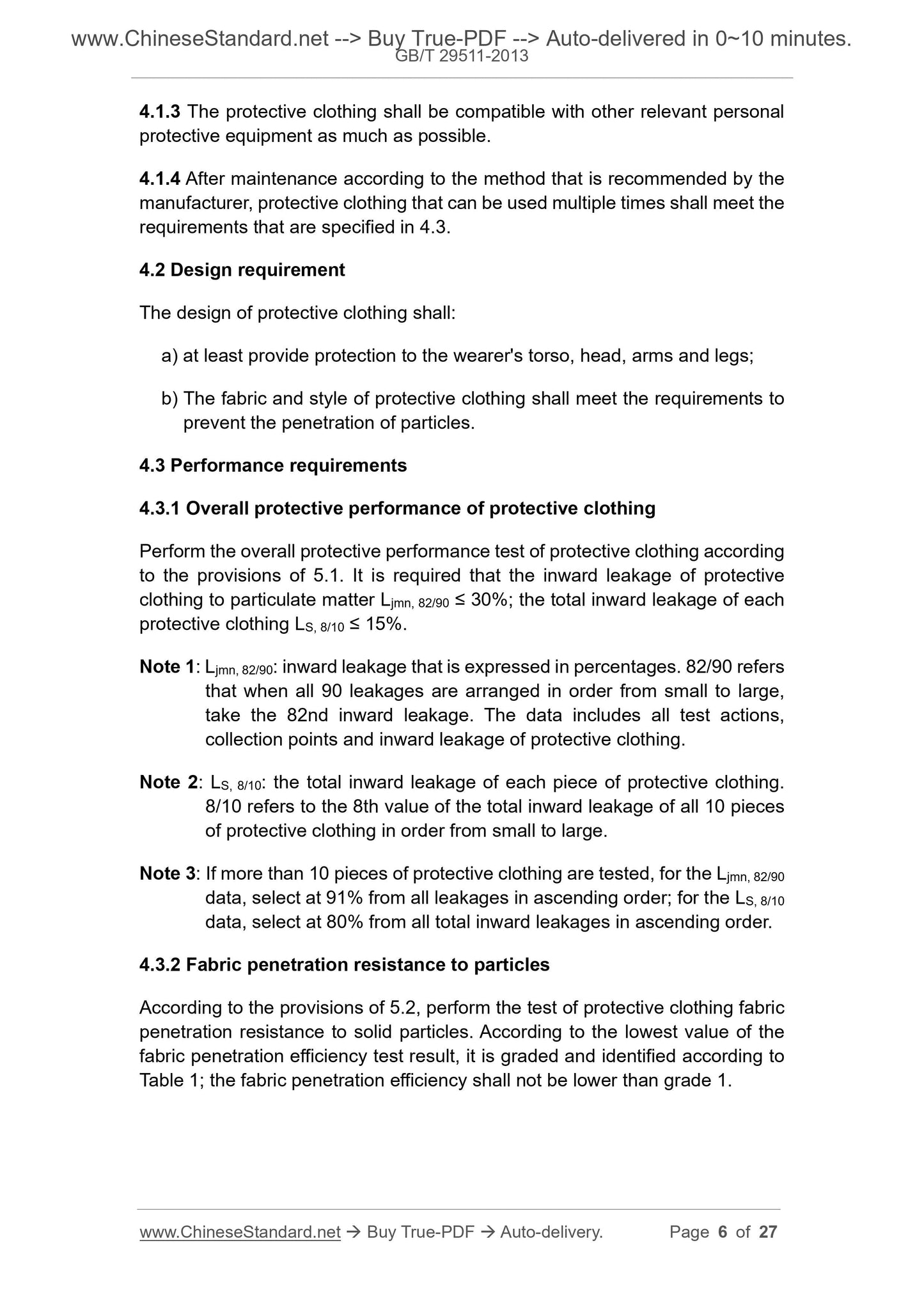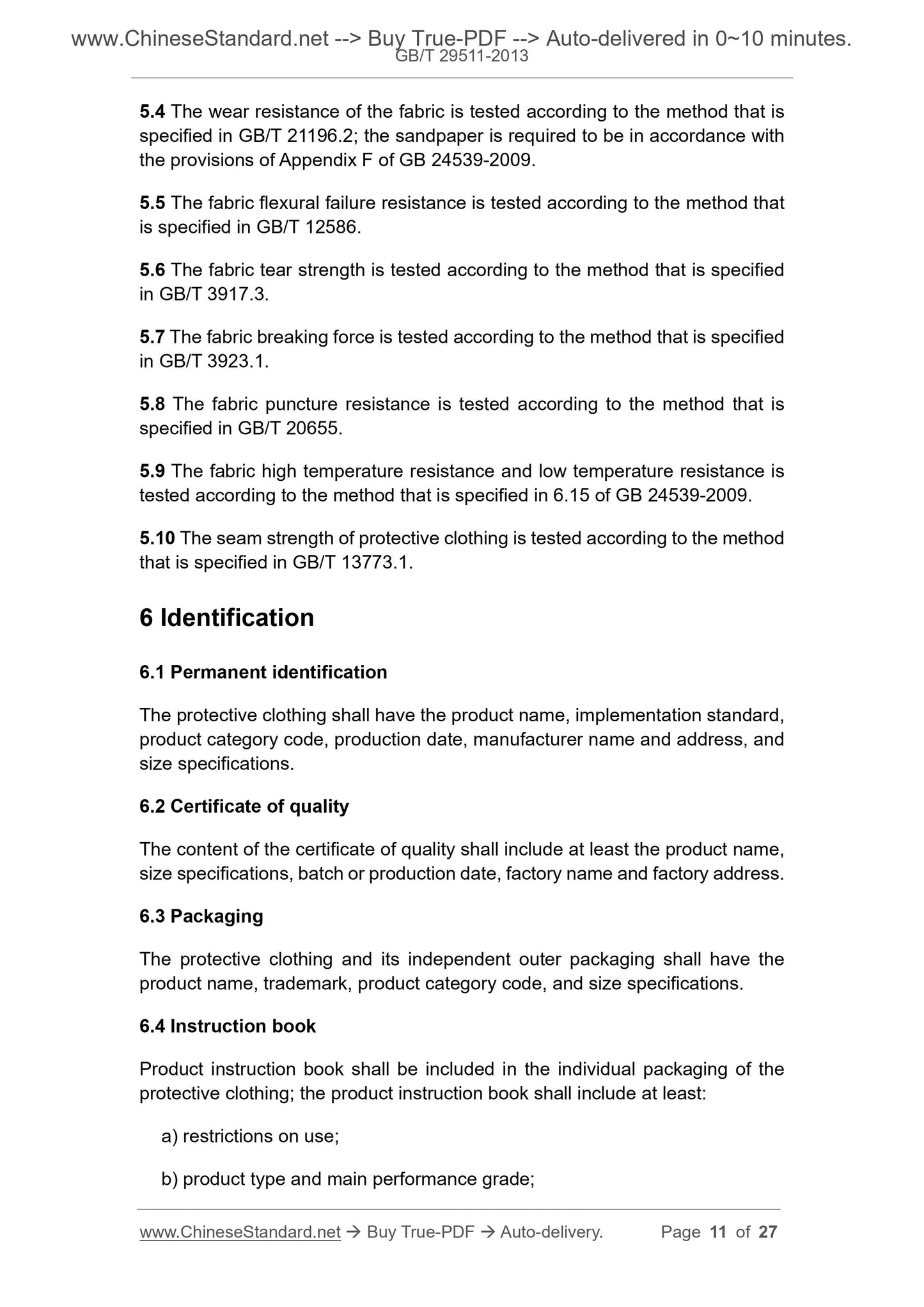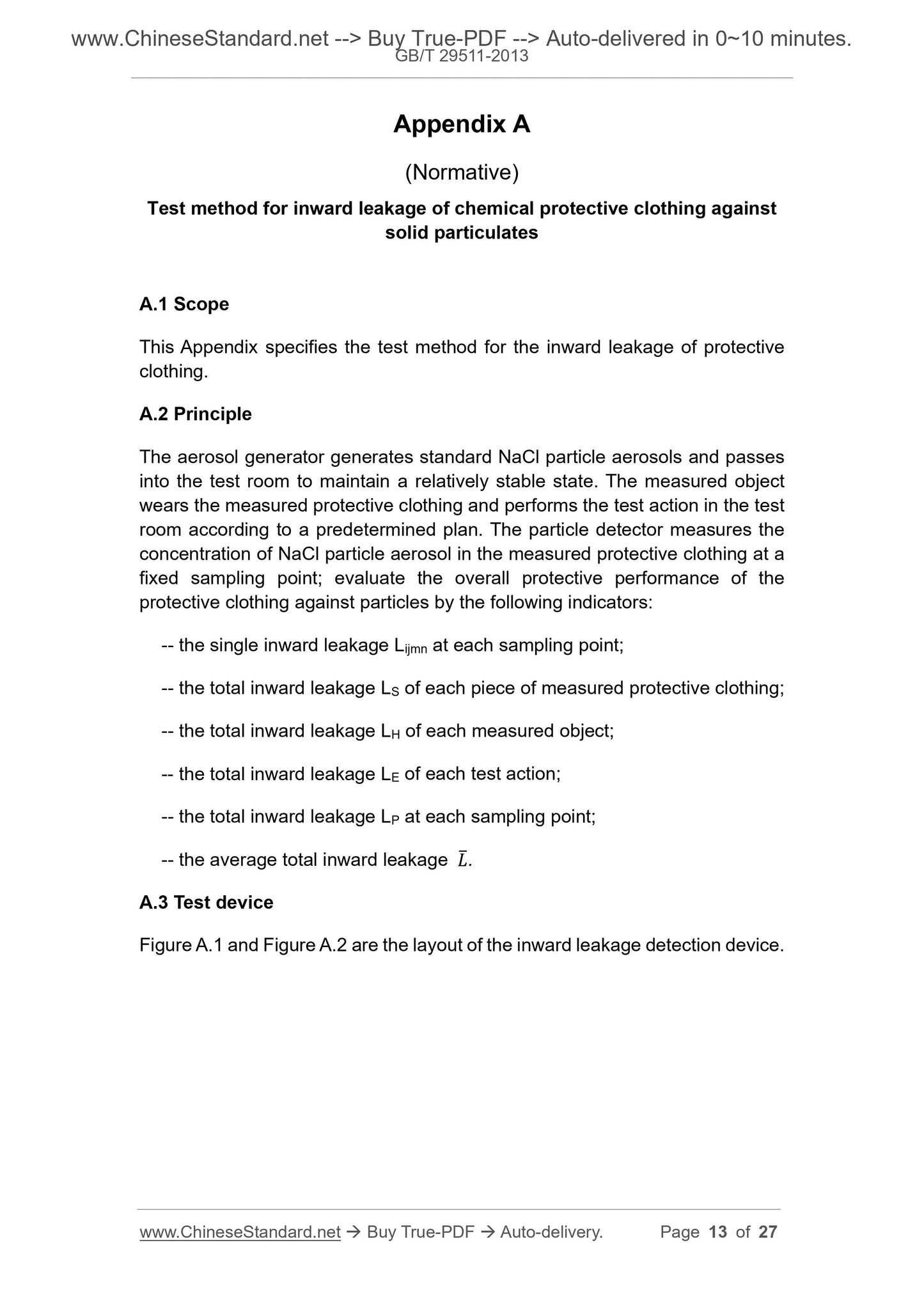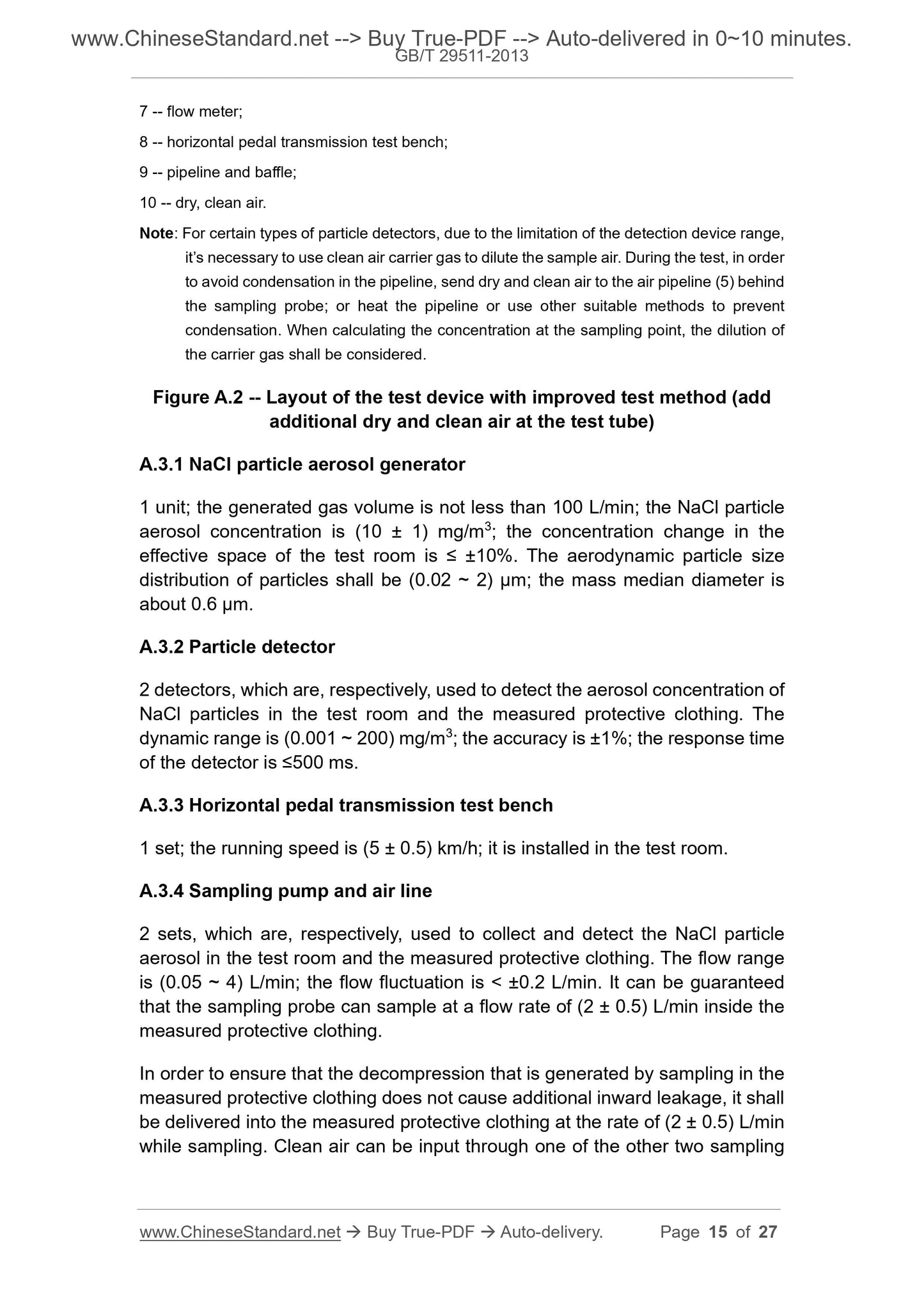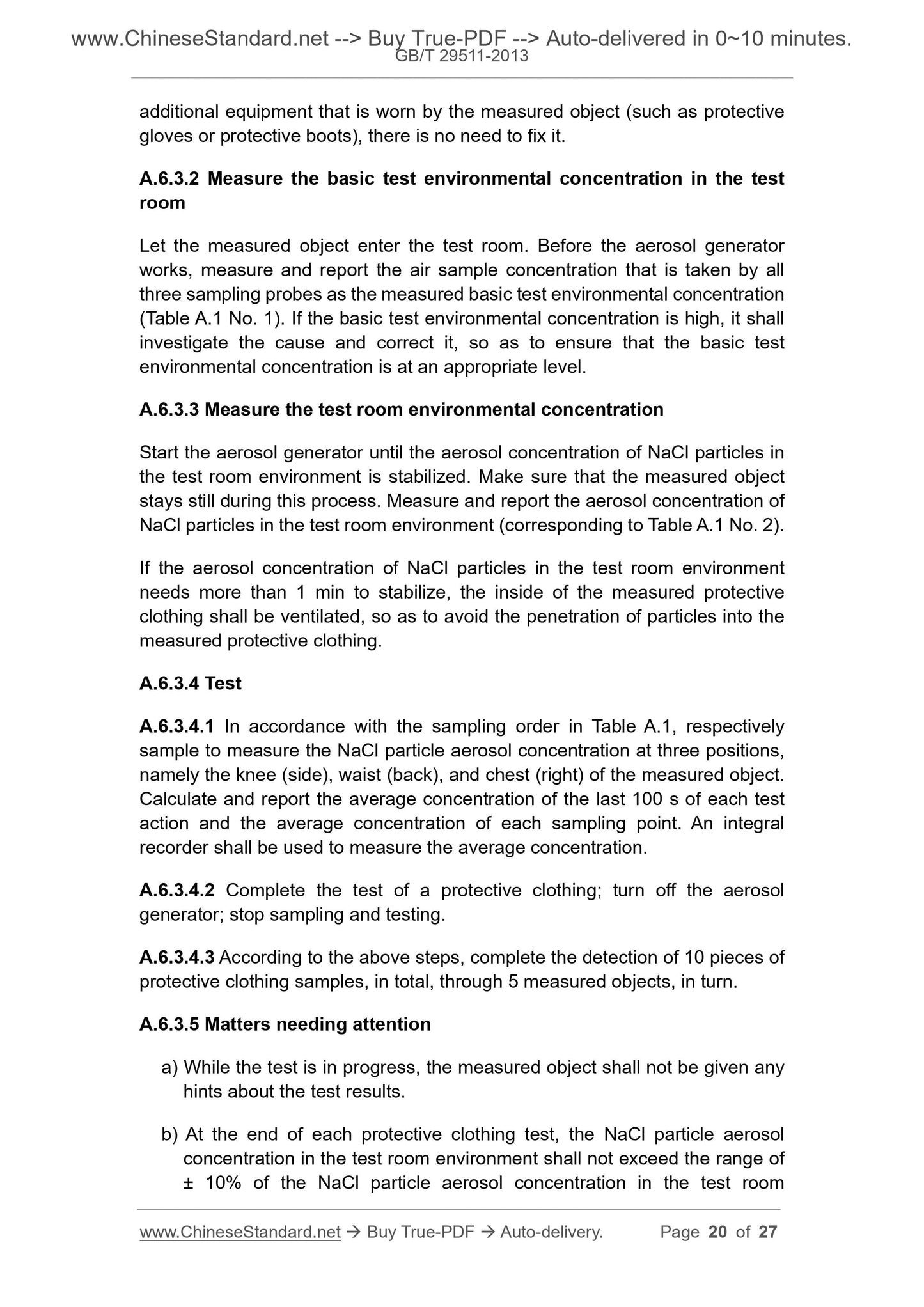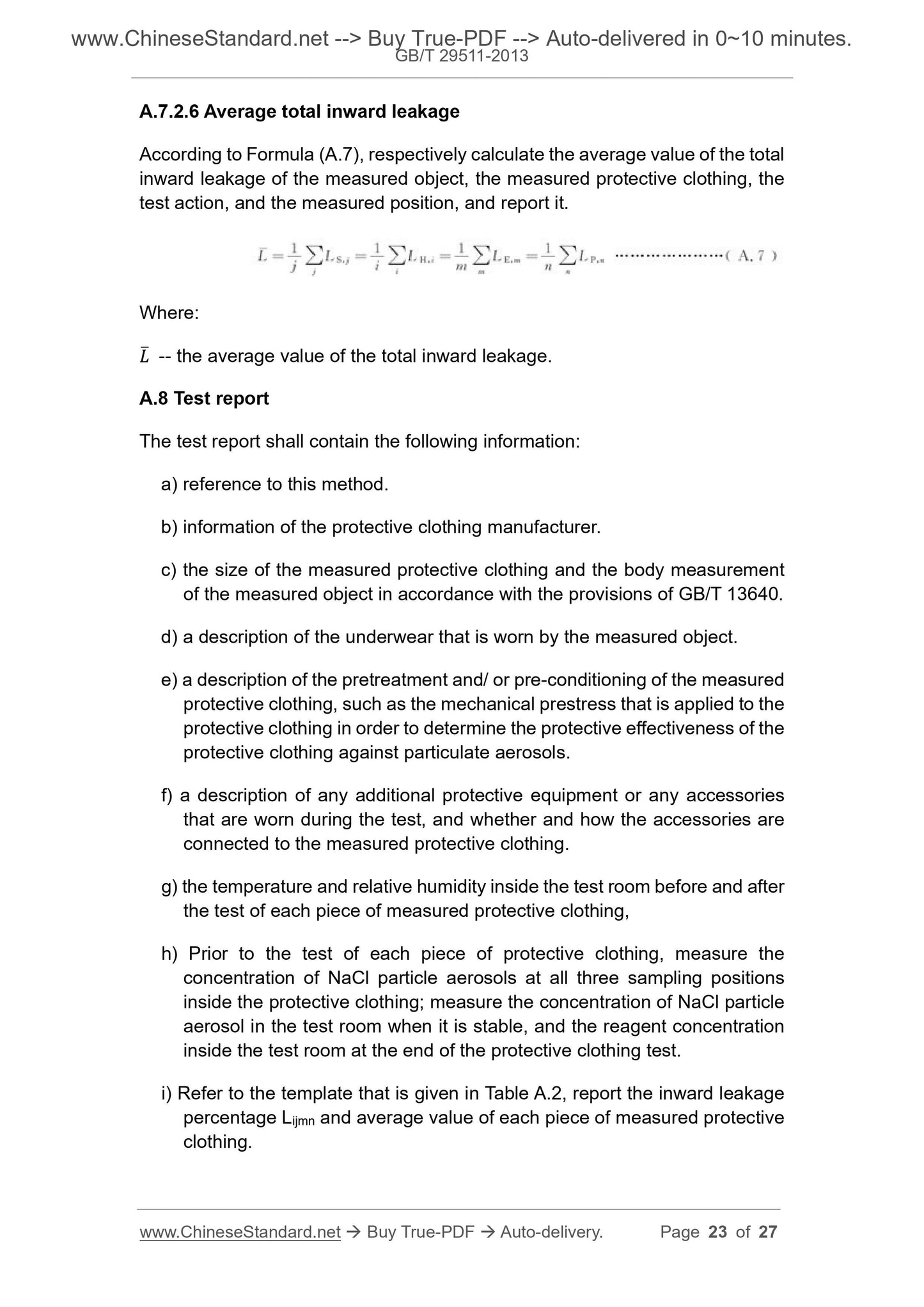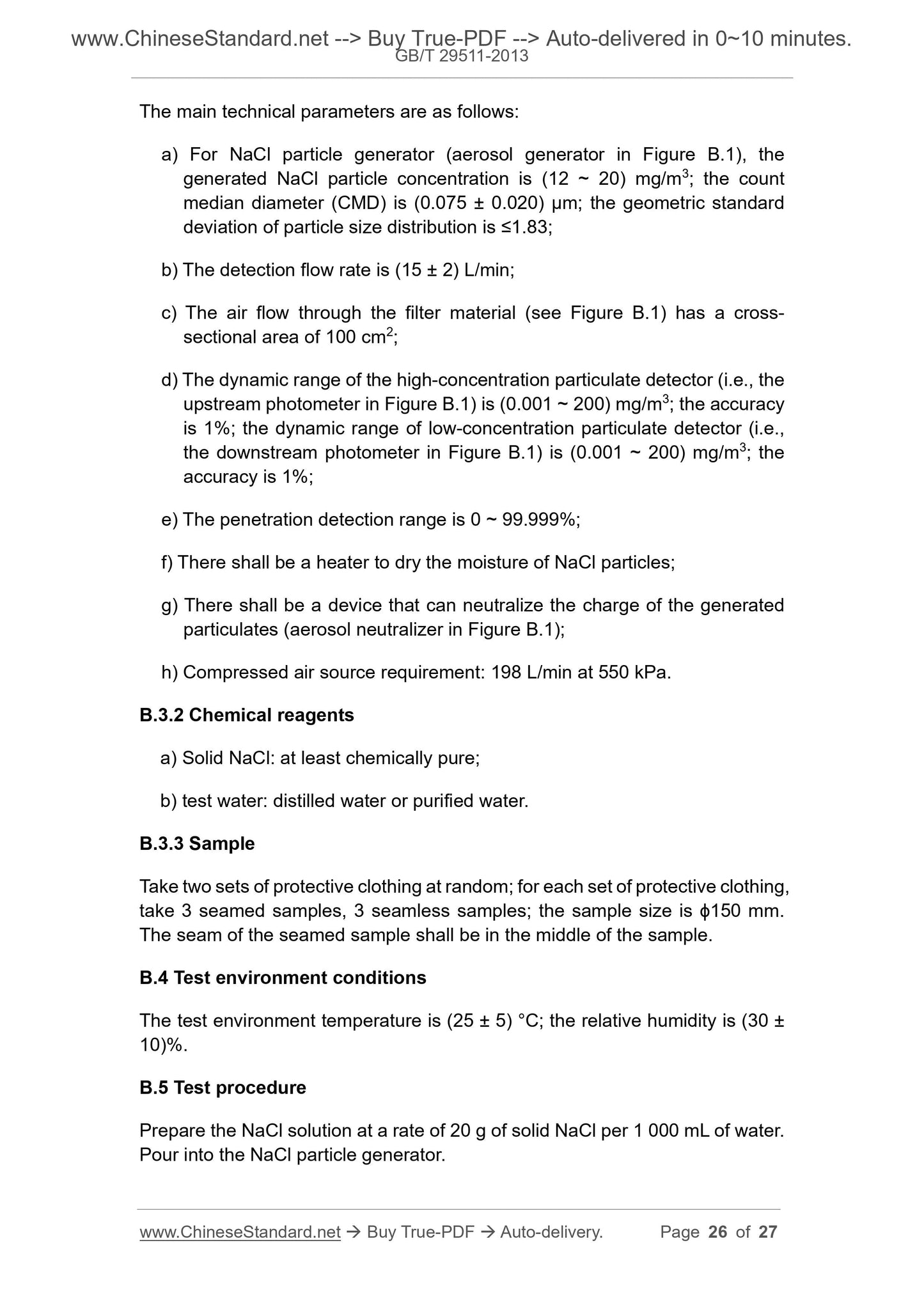1
/
of
10
www.ChineseStandard.us -- Field Test Asia Pte. Ltd.
GB/T 29511-2013 English PDF (GB/T29511-2013)
GB/T 29511-2013 English PDF (GB/T29511-2013)
Regular price
$230.00
Regular price
Sale price
$230.00
Unit price
/
per
Shipping calculated at checkout.
Couldn't load pickup availability
GB/T 29511-2013: Protective clothing -- Chemical protective clothing against solid particulates
Delivery: 9 seconds. Download (and Email) true-PDF + Invoice.Get Quotation: Click GB/T 29511-2013 (Self-service in 1-minute)
Newer / historical versions: GB/T 29511-2013
Preview True-PDF
Scope
This Standard specifies the gradation, basic performance requirements, testmethods and identification of chemical protective clothing against solid
particulates.
This Standard applies to the protective clothing that is required for the skin
protection of workers who are exposed to chemical contamination of
particulates in the workplace environment.
This Standard does not include technical requirements for supporting personal
protective equipment such as respiratory protective equipment, protective
gloves, protective shoes and other personal protective equipment.
Basic Data
| Standard ID | GB/T 29511-2013 (GB/T29511-2013) |
| Description (Translated English) | Protective clothing -- Chemical protective clothing against solid particulates |
| Sector / Industry | National Standard (Recommended) |
| Classification of Chinese Standard | C73 |
| Classification of International Standard | 12.340.10 |
| Word Count Estimation | 21,273 |
| Quoted Standard | GB/T 3917.3; GB/T 3923.1; GB/T 4744; GB/T 12586; GB/T 13640; GB/T 13773.1; GB/T 20655; GB/T 21196.2; GB 24539-2009 |
| Adopted Standard | ISO 13982.1-2004, NEQ; ISO 13982.2-2004, NEQ |
| Regulation (derived from) | National Standards Bulletin 2013 No. 6 |
| Issuing agency(ies) | General Administration of Quality Supervision, Inspection and Quarantine of the People's Republic of China, Standardization Administration of the People's Republic of China |
| Summary | This standard specifies the solid particles classification of chemical protective clothing, basic performance requirements, test methods, and identity. This standard applies to the workplace environment protection particulate matter is present staff of ch |
Share
